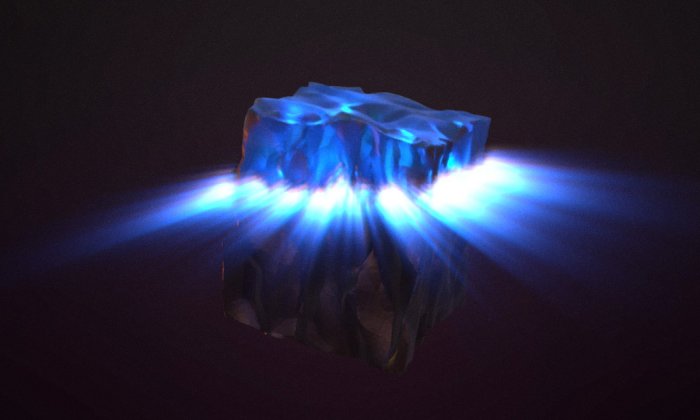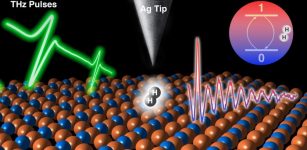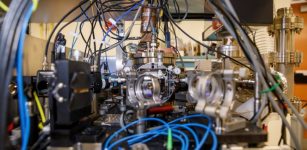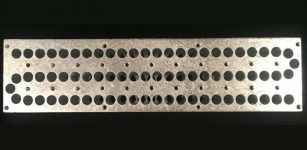Weak Coupling Shows Flaw In Strange Metal Model
Eddie Gonzales Jr. – MessageToEagle.com – Planckian metals have the potential to power high-temperature superconductors, quantum computers and a host of other next-generation technologies. However, these “strange” metals – in which electrical resistance increases linearly with temperature – are notoriously difficult to study, let alone comprehend.
Boris Vaudran for Quanta Magazine
In the last decade, physicists have attempted to explore the inner workings of these quantum materials with cold atom experiments, whereby the behavior of electrons is simulated with neutral atoms, light beams and ultra-cold temperatures. These 2D models provide an analog system that allows experimentalists to see the interactions at more scrutable length and time scales – microns and milliseconds, rather than angstroms and femtoseconds – bringing them ever closer to understanding the materials’ unusual electrical functions.
Now, Cornell researchers led by Erich Mueller, professor of physics in the College of Arts and Sciences, have found this experimental model doesn’t capture what’s really happening inside strange metals at all.
“These cold atom experiments are a really awesome way to try and learn about this strange metal behavior, this crazy unusual resistivity, which we believe is the key to understanding how to make higher-temperature superconductors and all sorts of other things,” Mueller said. “We found there’s actually a simple explanation for what happens in this experiment.”
Kiely and Mueller spent two years trying a variety of approaches to model the cold atom experiment. To visualize the experiment, imagine a Go board. The atoms are the black and white stones that can be moved, via quantum tunneling, from square to square, dissipating energy based on the strength of their interactions – or couplings – with other atoms.
The researchers found the most illuminating approach was to change the strength of the interactions between the atoms.
“This gives us a very clear picture of how to describe that system,” Kiely said. “When the atoms interact with each other very weakly, we can kind of build in the effective interactions based on the fact that we know what’s going on when they’re not interacting.”
By locating the limit at which these interactions were the weakest, the researchers were able to observe the exotic behavior of strange metals, but, surprisingly, in a context that wasn’t strange enough to warrant it. And the behavior still could be quantitatively explained.
“The interpretation of the cold atom experiment was that the same physics that was responsible for these high-temperature superconductors was occurring in these analog experiments, that they had found a strange metal,” Mueller said. “What Thomas showed was that although they saw the same thing as in the materials, it’s quite likely from a different source. This weakly attracting limit that we modeled is certainly not what’s going on in the material.”
While the Cornell researchers were able to explain with confidence what is happening in cold atom experiments, they are still not certain what is occurring inside strange metals themselves.
“It’s a hard problem,” Mueller said. “We’re hoping to have a more controlled setting to investigate the same physics, because the models that are being explored with these cold atom experiments probably aren’t sophisticated enough to explain what’s going on. But I think you can build a lot of great stuff off this, actually looking at this weak coupling limit and how things cross over into strong coupling.”
Their paper, “Transport in the Two-Dimensional Fermi-Hubbard Model: Lessons from Weak Coupling,” published Oct. 25 in Physical Review B. The lead author is doctoral student Thomas Kiely.
Written by Eddie Gonzales Jr. MessageToEagle.com Staff











